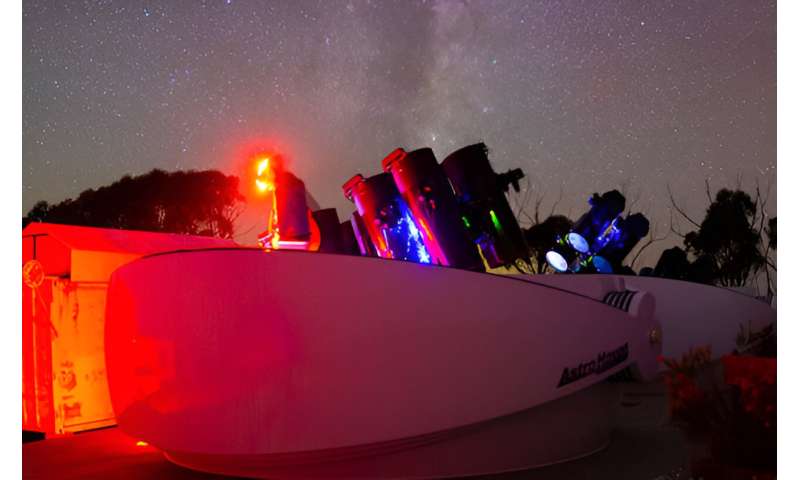Are you ready to become a Kilonova seeker?

The public is invited to help identify a rare type of cosmic explosion in real time as part of Zooniverse's novel citizen science project, Kilonova Seekers. Finding the optical signals (kilonovae) caused by the collision of neutron stars or a neutron star colliding with a black hole is the primary objective of this research.
Scientists with the Gravitational-wave Optical Transient Observer (GOTO) collaboration keep an eye on notifications from the LIGO, Virgo, and KAGRA gravitational-wave detectors, which pinpoint where in the sky a gravitational-wave signal, suggestive of such a collision, originated.
It can be difficult to distinguish genuine sources from less interesting ones or spurious artefacts, according to Dr. Felipe Jimenez-Ibarra from the Monash University School of Physics and Astronomy and GOTO collaborator.
"Kilonovae are one of the highest priorities for observers internationally, since only a few candidates have ever been detected, and we desperately need more examples to better understand their properties Dr. Jimenez-Ibarra," said.
"This project offers an amazing opportunity for the public to help us in the mammoth task of sifting the wheat from the chaff and hopefully finding some precious new examples of kilonovae to study."
Within 30 seconds following the alarm, the GOTO telescopes will automatically begin exploring this section of the sky for the optical "echo" of the gravitational wave signal. As soon as images are captured, the crew gets to work processing and analysing them. At the same time, those that look promising are forwarded to Kilonova Seekers for human review.
Development of the Kilonova Seekers program has been led by GOTO partners at the University of Warwick, and Portsmouth University. University of Warwick Ph.D. candidate Tom Killestein said although machine learning can help us identify the most obvious candidates, we need help to find the hidden gems in the data stream—transients we would have otherwise missed or overlooked."
The project is also expected to discover other types of more common events, including supernovae, variable stars, active galaxies in outburst, and perhaps even entirely new classes of object. Dr. Lisa Kelsey, a research fellow at the University of Portsmouth said images with a shaky start in the machine learning process are particularly interesting since they are more likely to include novel information.
GOTO telescopes scan the whole sky every few nights (weather permitting), and the project will provide fresh images every day for residents to explore; the vast majority of these images have never been viewed by human eyes.
"This is a great opportunity for the public to participate in cutting-edge scientific studies as they unfold in real time," Dr. Jimenez-Ibarra said.
Provided by Monash University